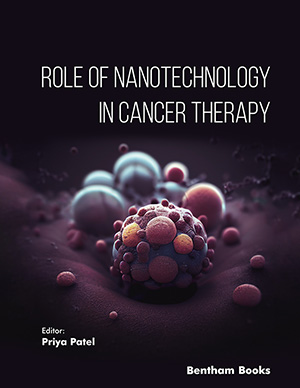Abstract
Background: Synthesis of copper nanoparticles needs to be carried out with the use of environmentally safer alternatives. Plant-mediated nano-fabrication is a new area of nanotechnology that is favoured over traditional methods due to its effectiveness with respect to safety, affordability, environmental friendliness, and biocompatibility. Synthesis of copper nanoparticles using natural sources is the demand of this era.
Methods: In the present study, the synthesis of copper nanoparticles (CuNPs) was carried out using three different plant extracts, i.e., Mentha piperita, Anethum graveolens L., and Calotropis procera. This synthesis was carried out in different conditions and the visual colour change in the solution confirmed the presence of copper nanoparticles. The nanoparticles were also characterized with UV-vis absorption spectroscopy and scanning electron microscope (SEM).
Conclusion: In comparison to the synthetic route, the current work represents a cost-effective and sustainable way for the synthesis of nanoparticles.
Keywords: Green synthesis, Cu nanoparticles, UV-vis, SEM, isolation of nanoparticles, SEM analysis, copper nanoparticles.
[http://dx.doi.org/10.1016/j.matpr.2020.08.549]
[http://dx.doi.org/10.1016/j.msec.2014.08.031] [PMID: 25280707]
[PMID: 25789215]
[http://dx.doi.org/10.2147/IJN.S121956] [PMID: 28243086]
[http://dx.doi.org/10.1016/j.cjac.2022.100189]
[http://dx.doi.org/10.1007/s10562-009-9871-8]
[http://dx.doi.org/10.1016/j.jallcom.2015.01.172]
[http://dx.doi.org/10.1007/978-3-319-15207-3_26-1]
[http://dx.doi.org/10.1002/jbm.a.35961] [PMID: 27885823]
[http://dx.doi.org/10.1007/s11095-012-0711-y] [PMID: 22392330]
[http://dx.doi.org/10.1002/wnan.1400] [PMID: 27040463]
(b) Konstantinos S, Stefanos M, Manassis M, Lakshminarayana P. Inorganic engineered nanoparticles in drinking water treatment: A critical review. Royal Society of Chemistry 2016; 2: 43-70.
[http://dx.doi.org/10.1016/j.ptlrs.2021.08.004]
[http://dx.doi.org/10.3390/s120201657] [PMID: 22438731]
[http://dx.doi.org/10.1007/s13213-010-0015-6]
[http://dx.doi.org/10.1002/jctb.4052]
[http://dx.doi.org/10.1021/cm0505244]
[http://dx.doi.org/10.1016/j.matlet.2013.10.011]
[http://dx.doi.org/10.1039/C9RA03110C] [PMID: 35516870]
[http://dx.doi.org/10.1080/17458080.2016.1184766]
[http://dx.doi.org/10.1021/acsanm.0c02713]
[http://dx.doi.org/10.1007/s10008-009-0846-x]
[http://dx.doi.org/10.3390/nano12020268] [PMID: 35055284]
[http://dx.doi.org/10.1021/ja00063a006]
[http://dx.doi.org/10.1021/jp9523837]
[http://dx.doi.org/10.1016/j.jcis.2004.01.071] [PMID: 15051447]
[http://dx.doi.org/10.1016/j.colsurfa.2010.02.011]
[http://dx.doi.org/10.1021/jp110483z]
[http://dx.doi.org/10.1016/j.jscs.2011.06.009]
[http://dx.doi.org/10.1088/2043-6262/2/1/015009]
[http://dx.doi.org/10.1016/j.matlet.2011.12.055]
[http://dx.doi.org/10.1016/j.jcis.2015.07.004] [PMID: 26164245]






























